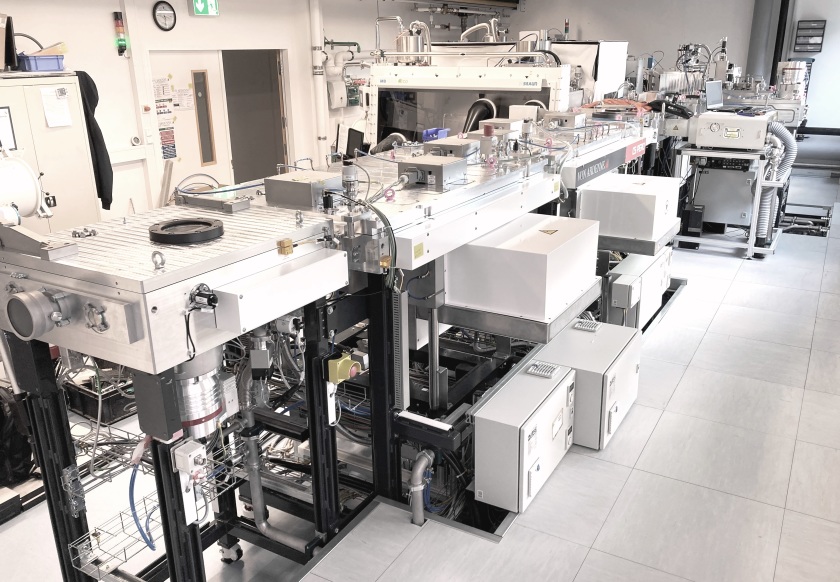On the way to mass production: perovskite silicon tandem cells

The cluster facility operated at HZB allows to produce large-area perovskite/silicon tandem solar cells. This facility, the only one of its kind in the world, helps to develop new industry-related processes, materials and solar cells. © B. Stannowski / HZB
In order to transfer tandem solar cells from laboratory scale to production, HZB is cooperating with the solar module manufacturer Meyer Burger, which has great expertise in heterojunction technology (HJT) for silicon modules. Within the framework of this cooperation, mass production-ready silicon bottom cells based on heterojunction technology are to be combined with a top cell based on perovskite technology.
Meyer Burger is a manufacturer of high-quality solar modules based on silicon heterojunction technology (HJT). Meyer Burger's research and development team has already developed HJT cells in recent years together with Bernd Stannowski's team at the Helmholtz-Zentrum Berlin.
The HZB has great expertise in the field of perovskite solar cells. Recently, laboratory tandem solar cells combining heterojunction and perovskite have achieved record efficiencies of over 31 percent, largely due to the work of Steve Albrecht's group. However, such record-breaking tandem cells have only the laboratory-standard areas of 1 cm² and are partly produced with processes that are not scalable.
"We are therefore delighted to be cooperating with Meyer Burger to transfer this fantastic technology into application," says Bernd Stannowski, who heads the cooperation at HZB. A new cluster facility (KOALA) will also be used. This globally unique facility, funded by the German Federal Ministry of Economics and Climate Protection (BMWK) and the Federal Ministry of Education and Research (BMBF), makes it possible to produce perovskite/silicon tandem solar cells in a vacuum on industry-standard large wafers.
"Meyer Burger manufactures in Europe and thus creates high-quality jobs. In doing so, the company is exploiting technologies that were developed in Europe," says Rutger Schlatmann, director of the Photovoltaics Competence Centre Berlin (PVcomB) at HZB. The new cooperation agreement is set to run for three years.
red.
https://www.helmholtz-berlin.de/pubbin/news_seite?nid=24366;sprache=en
- Copy link
-
The twisted nanotubes that tell a story
In collaboration with scientists in Germany, EPFL researchers have demonstrated that the spiral geometry of tiny, twisted magnetic tubes can be leveraged to transmit data based on quasiparticles called magnons, rather than electrons.
-
Bright prospects for tin perovskite solar cells
Perovskite solar cells are widely regarded as the next generation photovoltaic technology. However, they are not yet stable enough in the long term for widespread commercial use. One reason for this is migrating ions, which cause degradation of the semiconducting material over time. A team from HZB and the University of Potsdam has now investigated the ion density in four different, widely used perovskite compounds and discovered significant differences. Tin perovskite semiconductors produced with an alternative solvent had a particular low ion density — only one tenth that of lead perovskite semiconductors. This suggests that tin-based perovskites could be used to make solar cells that are not only really environmentally friendly but also very stable.
-
Synchrotron radiation sources: toolboxes for quantum technologies
Synchrotron radiation sources generate highly brilliant light pulses, ranging from infrared to hard X-rays, which can be used to gain deep insights into complex materials. An international team has now published an overview on synchrotron methods for the further development of quantum materials and technologies in the journal Advanced Functional Materials: Using concrete examples, they show how these unique tools can help to unlock the potential of quantum technologies such as quantum computing, overcome production barriers and pave the way for future breakthroughs.
